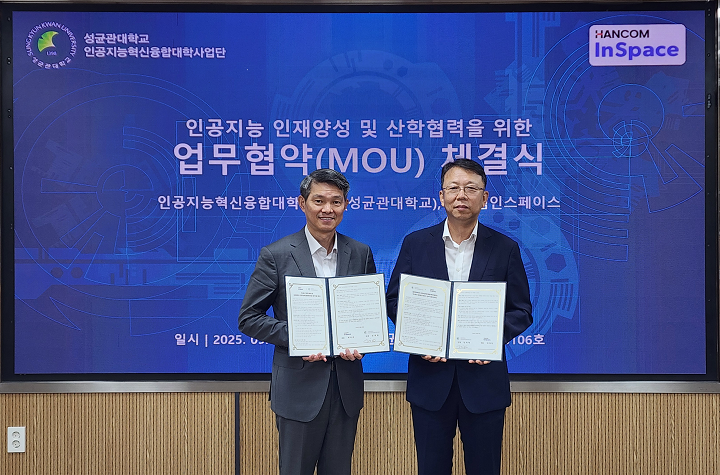[SPACE NEWS] Spire to host second optical payload for South Korea’s Hancom
- InSpace
- Aug 19, 2022
- 3 min read
(기사원문)

Hancom-1, a Spire 6U satellite carrying an optical payload for Hancom, was the first commercial satellite deployed for a private South Korean company. Credit: Spire Global
TAMPA, Fla. — Spire Global said Aug. 4 it will host a second Earth-imaging payload for Hancom InSpace, which became the first private South Korean company to operate a commercial satellite mission earlier this year.
Hancom will host an optical payload on a 6U Spire satellite — the size of six cubesats — in a mission slated to launch in the second half of 2023.
Spire will manage the payload integration, launch, and mission operations for the Hancom-2 satellite as part of its space-as-a-service business.
In May, SpaceX launched a Spire satellite carrying the Hancom-1 payload on a Falcon 9 Transporter-5 rideshare mission, marking the first commercial satellite deployed for a private South Korean company.
Hancom is a spin-off from South Korea’s space agency and specializes in image analysis for tracking vehicles and changes in infrastructure and the environment.
Hancom-1 and Hancom-2 are focused on optical imagery for agricultural applications and are part of a proposed constellation of up to 50 satellites.
The South Korean company “plans to provide solutions that observe crops and predict output through satellite observations,” Hancom CEO Choi Myungjin said, and “initial target countries are in Asia and the Middle East, where demand for satellite image data is high.”
Spire co-founder Joel Spark, who is general manager for the operator’s space services business, said Hancom-2 is currently planned to be the only payload on its upcoming 6U satellite.
Spire operates a constellation of more than a hundred multipurpose satellites in low Earth orbit that it builds in-house.
Most of them are 3U in size, Spark told SpaceNews, but the company also designs and manufactures 6U, 12U, and 16U satellites.
Spire declined to say how many customers its space services business has secured, although the group counts more than 625 customers across more than 60 countries.
“There is so much potential to create applications and businesses in space that will improve our lives on Earth, but the barriers to space are traditionally quite high,” he said.
“Building infrastructure in space is time intensive, takes a lot of capital, and requires a unique set of expertise. We’re seeing more and more organizations, both commercial and government, turn to us for our Space Services offering to help them deploy and scale their own constellation quickly and with minimum risk.”
Customers can bring their own payload, develop a custom one with Spire, or upload their software to one of Spire’s existing satellites for a “flat monthly fee,” he said.
Spire sees more growth opportunities ahead by improving the quantity and quality of data its satellites can produce.
“For more than two decades, the capability per kilogram of a satellite has been increasing about tenfold every five years,” Spark said.
“As this improvement curve continues, we’ll likely see more power and capability in smaller form factors, enabling more applications to be carried out on smallsats.”
Spire announced plans July 20 to improve its weather forecast capabilities by fitting future smallsats in its fleet with microwave sounders. A demonstration mission using a 16U Spire satellite is slated around the end of 2023 or early 2024.
The company also plans to install Ku-band antennas on its satellites beginning next year to provide higher capacity data services.


